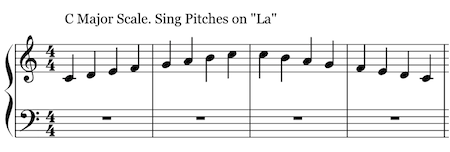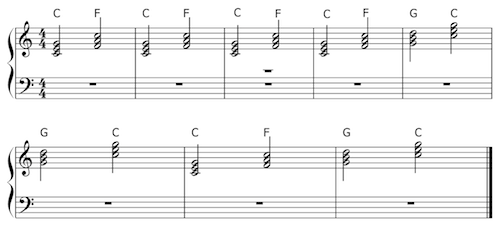 Ever pick up a piece of sheet music and wish that you could hear the notes on the page? Working on ear training can be frustrating if you can’t hear the melody and don’t know how to pick it out on a keyboard. Noteflight’s online notation software can help you develop your ear training skills whether you are a beginning musician, a music educator, or a professional.
Ever pick up a piece of sheet music and wish that you could hear the notes on the page? Working on ear training can be frustrating if you can’t hear the melody and don’t know how to pick it out on a keyboard. Noteflight’s online notation software can help you develop your ear training skills whether you are a beginning musician, a music educator, or a professional.
Sign up for Noteflight’s free account at Noteflight.com. Once you have registered, you have a virtual music program at your fingertips. Not only does Noteflight give you the tools to create original music and your own ear training exercises, it gives you social networking capabilities through Facebook and Twitter. You can even set up a profile to share your work with the world. Noteflight provides you with HTML code to post your scores and exercises on your own personal blog or website and allows you to export your files as audio and MIDI files.
Picking out a melody
Use Noteflight’s simple interface to input a melody for easy playback.
- Select New Score. Choose the private setting. You can change this setting later to share original music and/or exercises.
- Click in the measure, and use the music menu to add notes. Don’t worry if you do not read music. Just use your sheet music as a guide.
- Once you have entered the notes, save your file (under the File menu). Play the melody back with the controls under the Play menu or by hitting the “p” key. Under the Score menu, you can change the instrument, time signature, and other musical elements.
- Now you can export the file as an audio file or MIDI file and import this file into iTunes, Garageband, Finale, Logic, ProTools, or any other music software program.
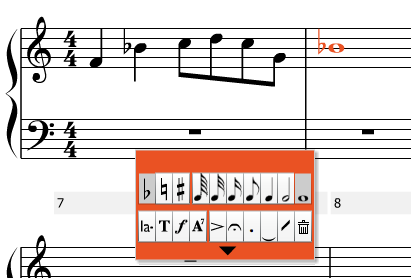
Input notes one-by-one to re-create your score, or create a new composition
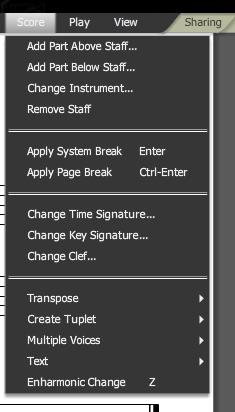
Adjust properties of your score
using the Score Menu
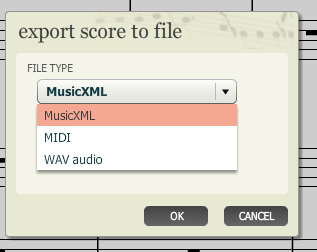
Export your music for use in another program,
or to save to disk
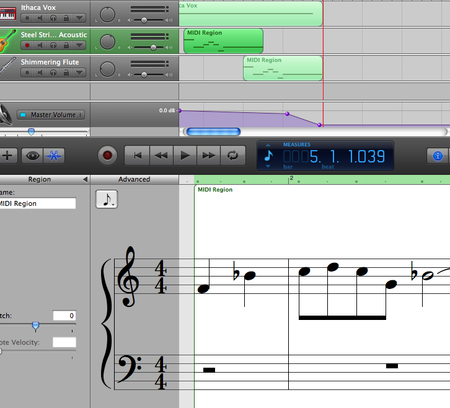
Once you've exported, you can continue working
on your music with another program (e.g. GarageBand)
Ear training exercises
You can use the easy interface to learn music basics like scales, chords, and intervals using the easy music notation menu. Simply input the notes. Playback the file online or export the music to audio. Share your ear training exercises with your friends easily through Facebook or post them to your personal music blog. Noteflight’s online community even allows other users to check out your work and leave helpful comments.
Example 1: Scales
Learn how to sing scales in pitch by inputting scales into Noteflight. For example, if you want to learn the C scale, type in each note of the scale as quarter notes ascending and descending from C to C, one octave. You can then choose to export the audio or transpose the same score to other keys using the transpose option in the Score menu.
Example 2: Chords
Having difficulty with identifying chords? Repetition will help your ear training. Create simple exercises which repeat two or three chords. As you become comfortable and familiar with each set of chords, you can create new exercises with increasingly complicated chords.
Whether you are just learning how to sing a tune or want to put together a quick lead sheet for your band, you can let your musical creativity soar with Noteflight.
Have you come up with a nifty way to use Noteflight in your training? Let us know in the comments!


